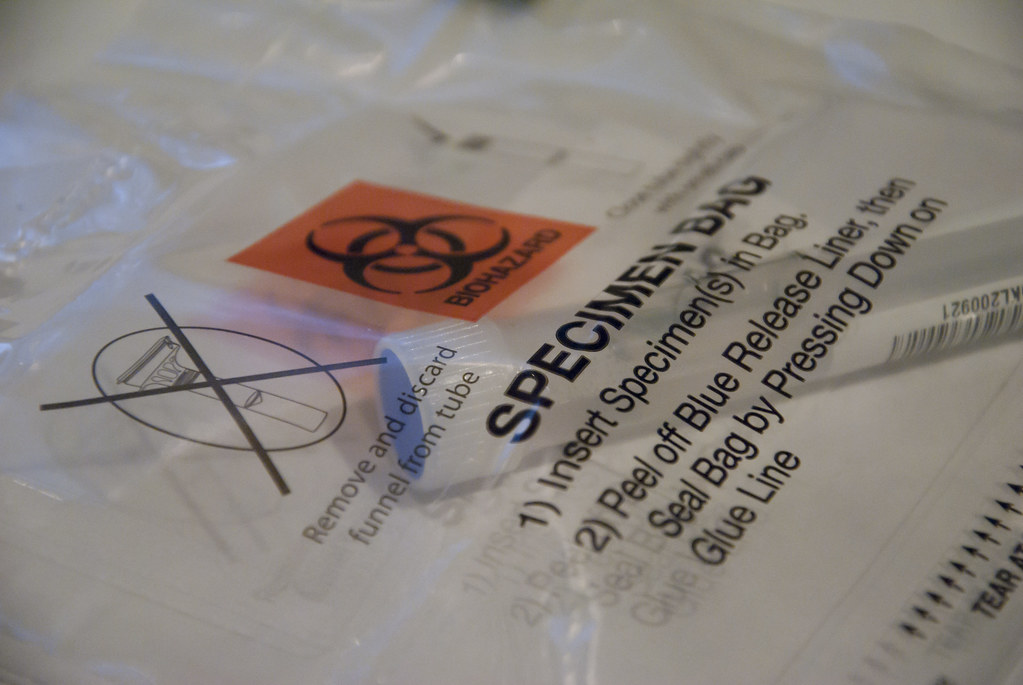hoping to reap the wide scope of DNA-testing benefits. From finding unknown relatives to identifying genetic variants and breaking down individual ancestries, 23andMe has advertised a data collection process as simple as it is ingenious.
Once a DNA-testing kit is received, customers provide saliva samples at home that are sent to be analyzed through genotyping, meaning that researchers examine specific genomic locations known to differ between individuals. 23andMe then analyzes the specific genetic makeup of those respective sites to identify ancestry compositions, traits, and genetic health risks. Amidst the range of similar genetic-testing companies, including AncestryDNA and Illumina, 23andMe was the first to offer autosomal testing where sequences within non-sex chromosomes (autosomes) are analyzed as opposed to the two sex chromosomes (X and Y), though the approach has been widely adopted since.
Nonetheless, 23andMe has faced enduring controversy and criticism since its launch. In 2013, Scientific American published an article declaring 23andMe as “a mechanism meant to be a front end for a massive information-gathering operation against an unwitting public” and expressed concerns about the 23andMe’s capacity to protect personal genetic information “even if it were so inclined.”
“It’s similar right to the privacy issues around data. It’s not just that people don’t want their personal information out there,” junior Rachel Wei said. “It’s partially that companies can and will buy that information to use for whatever they want, right? And a lot of times that can end up being pretty nefarious, like, imagine you have a extensive family history of diabetes or something, so your healthcare provider decides to increase your costs…off insurance or of insulin, or any of that…because they have obtained that data and run the numbers, they could totally do that.”
In the past three weeks, privacy concerns surrounding 23andMe’s archives of genetic information have soared as the company filed for Chapter 11 bankruptcy protection on March 23. Its bankruptcy in itself is unsurprising, given the waning demand for its DNA testing kits since its peak value at $6 billion in 2021, coupled with its large-scale data breach scandal in 2023 when the personal data of nearly 7 million 23andMe customers were leaked. What really has customers scrambling to delete their data however, is that the company announced its pursuit of a sale. This means the documented genomic data of millions will be sold to the highest bidder, a right of the company as affirmed by a U.S. Bankruptcy Judge according to 23andMe. And despite the 23andMe board chair Mark Jensen’s reassurance that “data privacy will be an important consideration in any potential transaction,” the company’s privacy policy also states that the policy itself may be changed at any time.
As of its bankruptcy announcement, over 80 percent of its customers have consented to the use of their “aggregate, de-identified genetic information for research,” raising further alarm from customers, news sources and attorneys alike as the longstanding debate over privacy and misuse risks in light of potentially rewarding advancements from genetic data distribution resurfaces: “I understand the desire to want to help and research and do more…genetic studies with people. And I understand that gathering more data can lead to more scientific explorations of ideas…but I think that there’s also a chance where…you don’t know what, in the future, people will come up with with your data…It just kind of scares me to give my data out in terms of my DNA and not know what the future holds for genomic research,” Biology teacher Bessy Albaugh said.












